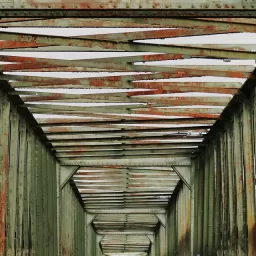A very strong metal, bronze has been used for centuries for a variety of uses.
What is it exactly?
Bronze is an alloy mix blend of copper and tin. The amounts that are blended vary, but the most common composition is approximately 88% copper and 12% tin. Bronze is formed by smelting copper and mixing it with tin. Tin, being a brittle metal, turns copper into the much harder and tougher bronze material.
What is it used for?
Bronze is a popular metal with widespread usage. It is most commonly used in building parts and materials, weapons, decorative items, statues, and musical instruments. Bronze parts are typically formed using CNC machining, peek machining, and vespel machining, to create electrical connectors, springs, bearings, and clips. It is commonly used in shipping parts and bearings, as its resistance to sea water corrosion makes it a very suitable material. Bronze is also extensively used in cast sculpture, due to its desirable quality of expanding slightly before setting, and this quality means that bronze can fill the finest details of a mold. Once set, bronze is tough and durable if taken care of. When bronze is used for manufacturing bells and cymbals, it creates a resonating sound. Various techniques and thicknesses are used to create pitch and tone. Other uses include weapon and armor manufacture; however, this is rarely used today. In past times, bronze was used extensively for the manufacture of weapons and armor. Before the advent of bronze into weapon manufacturing, a blacksmith would use stone or wood, which was much heavier and cumbersome than bronze, whereas bronze weapons were lighter as well as sharper. Bronze armor is stronger and lighter than previously manufactured leather and wood equivalents.
Positives
Bronze is resistant to corrosion, even saltwater corrosion, and is an excellent conductor of heat and electricity. If used for the manufacture of hammers, mallets, and other durable tools, it has the quality of not generating sparks, and is invaluable in explosive atmospheres or if around flammable vapors.
Negatives
It is an expensive material to produce and can be brittle, particularly if old. It is susceptible to “bronze disease” which is when chloride and oxygen combines together in a damp environment attacking the material. Small rough green spots form on the bronze, indicating the bronze has the disease and if not treated will result in corrosion.
Lastly, it’s worth noting that bronze is also well-known for its green hue, which is a patina tarnish that forms to protect the metal. Patina is a coating of chemical compounds such as sulfides, sulfates, oxides and carbonates. It’s formed on the surface of the metal when exposed to the elements. Bronze items exposed to oxygen, rain, and carbon dioxide, take on this patina if not cleaned and left to the elements. Many bronze ancient items and artifacts, and outdoor sculptures, such as The Statue of Liberty and Auguste Rodin’s The Thinker have this green hue.
If you wish to keep the metallic brown color of bronze, and prevent patination, it needs to be polished regularly. Natural methods such as baking soda and lemon juice are good for keeping patina off the metal, and occasional polishing will keep the metal looking shining. Don’t clean too often though, as can dull the metal sheen, and make sure you keep bronze dry to prevent patina from forming.
BY by GAHZLY
El Sewedy wire prices 2022
#Bronze #Properties


